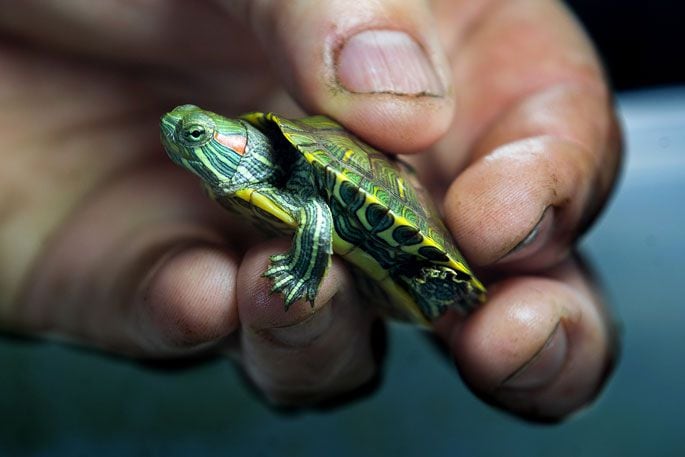A Katikati couple is on a mission to teach reptile owners to be more responsible with their cold-blooded pets.
It comes amid reports of one of the world’s 100 most invasive pests – the red-eared slider turtle – breeding in the Bay of Plenty waterways.
During the past four decades Donna and Graeme Hannah have bred and cared for reptiles and have gained a reputation nationwide for their expertise.
Their concern, though, is growing for the number of abandoned reptiles in the Bay of Plenty. “We quite often get phone calls from people, including from Pāpāmoa, who have found a red-eared slider turtle. They’re definitely getting released and breeding over there,” says Donna.
“They start off cute around the size of a 50c piece,” says Graeme. “But they grow quite large, needing more maintenance, a bigger tank, or a pond outside. That’s when people tend to just let them go.”
The Bay of Plenty Regional Council (BOPRC) has had 10 sightings reported in the last year, including a female turtle that was found in Gordon Carmichael Reserve in Bethlehem. Staff subsequently found a nest with 16 eggs.
BOPRC biosecurity manager Greg Corbett says red-eared slider turtles can be kept as pets but releasing them into the wild is an offence. “Like any other domesticated animal, it’s the responsibility of the pet owner to find an alternative home if they can no longer care for it or want it.
“Given that this species can live up to 50 years and can grow to the size of a dinner plate, anyone considering purchasing a red-eared slider turtle should seriously consider the appropriateness of it as a pet,” says Greg.
According to BOPRC, red-eared slider turtles are omnivores that feed on small fish, plants, kōura (freshwater crayfish) and even small birds such as ducklings.
“They displace wetland birds from nesting sites as they use these spaces for basking in the sun. They also degrade water quality through their wide browsing of aquatic life, removing important ecosystem species,” says Greg.
If people no longer want their pet, they should look to privately re-home or use a reputable site that assists with re-homing the turtles. Further information on this can be found on the Department of Conservation website with links to re-homing and turtle rescue sites.
- SunLive

